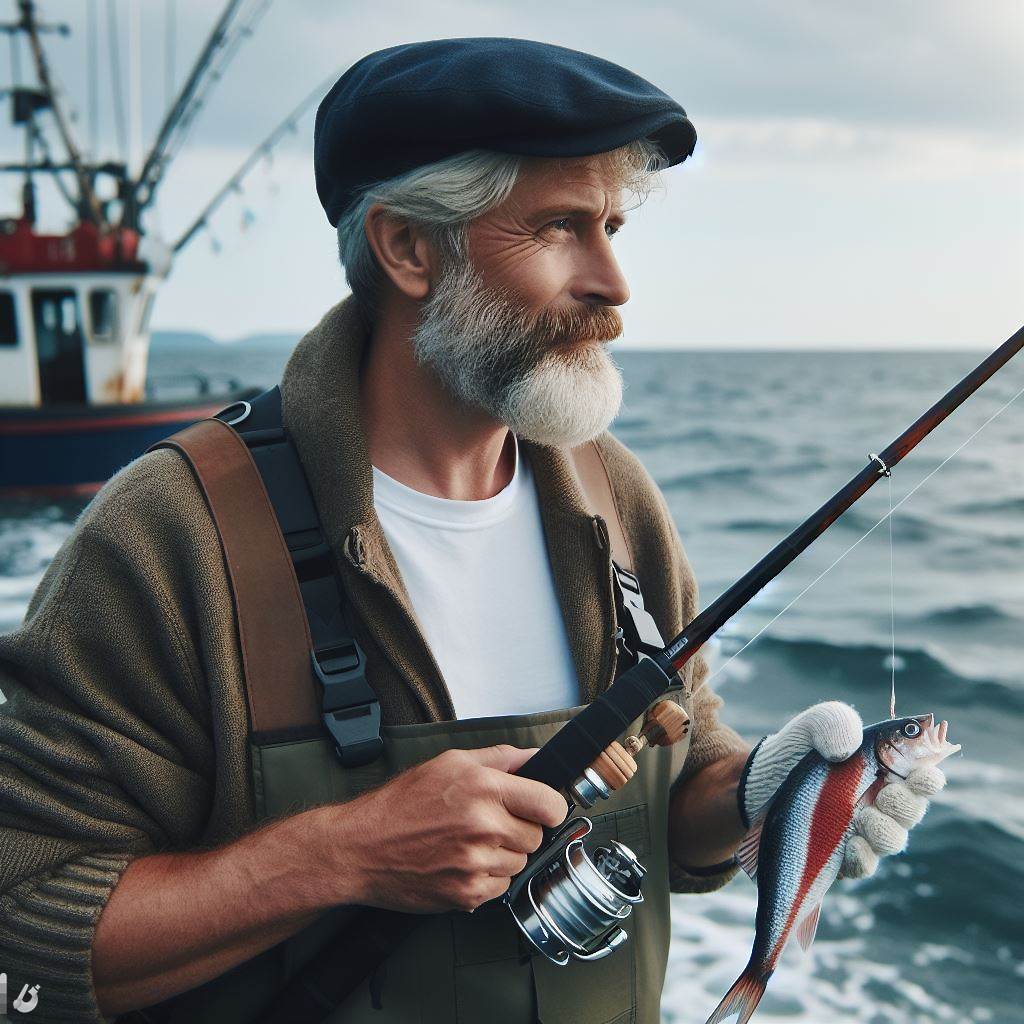Introduction
Fishing quotas in the UK are rules that limit the amount of fish that can be caught by fishermen.
Understanding this system is crucial for sustainable fishing and protecting marine resources.
The UK sets fishing quotas actively to manage fish stocks and prevent overfishing.
It is important to understand the system to ensure the longevity of fish populations and the fishing industry.
By setting limits on catch quantities, fishing quotas help maintain a balance between fishing activities and the natural replenishment of fish stocks.
Understanding fishing quotas enables fishermen to make informed decisions about their catches, leading to sustainable practices.
The system takes into account various factors like fish population levels, scientific research, and environmental impacts.
Failure to understand fishing quotas can lead to the depletion of fish stocks and harm the ecosystem.
A comprehensive understanding of the system allows policymakers to make informed decisions on quota allocations.
It provides a framework for sustainable fishing, ensuring the livelihoods of fishermen while preserving fish populations for future generations.
Furthermore, understanding fishing quotas enables consumers to make environmentally conscious choices when purchasing seafood.
Therefore, comprehending the UK fishing quota system is crucial for the long-term sustainability of both the fishing industry and marine ecosystems.
History and Background of UK Fishing Quotas
In order to understand the current system of UK fishing quotas, it is necessary to delve into its history and background.
The creation of the Common Fisheries Policy (CFP) in the 1970s marked a significant turning point for the UK fishing industry.
Creation of the Common Fisheries Policy (CFP)
- The European Economic Community (EEC) established the CFP in 1970.
- It aimed to regulate fisheries and ensure the sustainable management of fish stocks.
- The UK, along with other member states, agreed to abide by the CFP’s rules and regulations.
How the UK Fishing Quotas System Evolved Over Time
- Initially, fishing quotas were not part of the CFP’s framework.
- Concerned about overfishing and declining stocks, authorities introduced quotas in the 1980s.
- The system initially allocated quotas based on historical fishing patterns.
- As the CFP evolved, the authorities distributed quotas based on scientific advice over time.
- This shift aimed to ensure the long-term sustainability of fish populations.
- The industry now allows buying, selling, and leasing of transferable quotas as tradable assets.
Effects of the CFP on the UK Fishing Industry
- The CFP has had significant impacts on the UK fishing industry.
- Some argue that the system has led to the decline of the UK fishing fleet.
- Quota limitations forced many small-scale fishermen out of the industry.
- Large-scale industrial fishing operations have gained control over a significant portion of the quotas.
- There have been debates over the fairness and effectiveness of the quota distribution system.
- Some argue that it favors larger, wealthier fishing companies at the expense of small-scale fishermen.
- Brexit provided an opportunity for the UK to regain control over its fishing waters and quotas.
- The UK government has expressed its intention to review and potentially reform the quota system.
- There are ongoing discussions and negotiations with the EU to determine the future of UK fishing quotas.
Basically, the history and background of UK fishing quotas are intertwined with the establishment of the Common Fisheries Policy in the 1970s.
The evolution of the quota system throughout the years has had significant effects on the UK fishing industry.
As the UK navigates its post-Brexit future, the topic of fishing quotas remains a contentious issue that will shape the sustainability and viability of the industry.
The Purpose and Goals of UK Fishing Quotas
The United Kingdom actively implements fishing quotas to manage and regulate fishing, ensuring fish stock conservation, promoting industry sustainability, and enabling fair distribution among EU member states.
Conservation of Fish Stocks and Marine Ecosystems
- Protecting the abundance and diversity of fish species in UK waters is a fundamental objective of fishing quotas.
- By setting limits on the amount of fish that can be caught, quotas aim to prevent overfishing and the depletion of fish populations.
- These measures contribute to maintaining the health and balance of marine ecosystems.
- Moreover, fishing quotas also protect vulnerable species and habitats from excessive exploitation, preserving biodiversity.
Ensuring Long-Term Sustainability of the Fishing Industry
- Fishing quotas play a crucial role in ensuring the long-term viability and sustainability of the fishing industry.
- By establishing catch limits, quotas help prevent the collapse of fish stocks, which could have severe economic consequences for fishermen and fishing communities.
- Through sustainable fishing practices, quotas enable the industry to thrive and provide livelihoods for future generations.
- Additionally, fishing quotas encourage innovation and the adoption of more selective and eco-friendly fishing techniques to minimize bycatch and environmental impacts.
Fair Distribution of Fishing Opportunities Among EU Member States
- As part of the European Union’s Common Fisheries Policy, UK fishing quotas aim to ensure an equitable allocation of fishing opportunities among member states.
- These quotas are determined through negotiation and consultation between the UK and other EU countries.
- By dividing the available fishing resources fairly, quotas help prevent overfishing by any single country.
- This approach promotes cooperation and prevents conflicts over fishing rights between EU nations.
- Furthermore, fishing quotas contribute to the creation of a level playing field, fostering fairness and equality within the European fishing industry.
In general, UK fishing quotas aim to conserve fish stocks, ensure long-term industry sustainability, and distribute fishing opportunities equitably among EU member states.
By implementing these quotas, the UK strives to preserve marine ecosystems, protect the livelihoods of fishermen, and promote harmony and fairness within the European fishing sector.
Read: Women in UK Farming: Challenges and Triumphs
Allocation process of fishing quotas in the UK
When it comes to allocating fishing quotas in the UK, several factors are taken into consideration.
These factors help determine the quotas for each species, ensuring sustainable fishing practices and the long-term health of marine ecosystems.
Factors considered when determining quotas for each species
- Species population: The first factor considered is the population size and health of the species. Quotas are set to maintain a balance between fishing and the natural reproduction rate.
- Scientific assessments: Scientific assessments play a crucial role in determining the health and abundance of fish stocks. These assessments provide valuable insights into the sustainable fishing limits for each species.
- Environmental impact: The impact of fishing activities on the marine environment is also taken into account.
Quotas are set to minimize any negative ecological effects and maintain the overall biodiversity. - Economic considerations: The economic aspect of fishing is also considered. Quotas are allocated in a way that supports the livelihoods of fishermen while ensuring the long-term profitability of the industry.
- Historical data: Historical catch data and fishing patterns are also analyzed. This information helps in understanding the fishing pressure on different species and assists in setting appropriate quotas.
Role of scientific assessments and advice
Scientific assessments and advice form a critical component in the allocation process of fishing quotas.
These assessments are conducted by experts who closely monitor fish populations and the health of marine ecosystems.
They use various methods such as surveys, sampling, and data analysis to gather information.
Based on the scientific assessments, advice is provided to regulatory bodies and policymakers.
This advice includes recommended catch limits, fishing areas, and any necessary conservation measures. Policymakers take this advice into consideration when deciding on the final allocation of quotas.
Involvement of industry stakeholders in the decision-making process
The decision-making process of allocating fishing quotas in the UK also involves industry stakeholders.
These stakeholders represent various interests, including commercial fishermen, environmental organizations, and local communities.
The involvement of industry stakeholders ensures that different perspectives and considerations are taken into account.
It helps in creating a balanced approach that addresses the needs of both the fishing industry and the sustainability of fish stocks.
Stakeholders provide input, feedback, and suggestions during consultation processes and public meetings.
Their valuable insights contribute to shaping fishing policies and quotas to reflect the interests and concerns of all parties involved.
In essence, the allocation of fishing quotas in the UK is a complex process that considers multiple factors, scientific assessments, and stakeholder involvement.
By carefully balancing economic, environmental, and social aspects, the UK aims to maintain sustainable fishing practices and preserve the marine ecosystems for future generations.
Read: UK Farming Regulations: An Essential Overview

Challenges and Controversies Surrounding UK Fishing Quotas
UK catch limits. have long been a topic of debate, with various challenges and controversies arising.
These issues range from disputes between different fishing sectors to the impact on coastal communities and livelihoods.
Furthermore, there are criticisms of the EU catch limits. system by UK fishermen and industry representatives.
Disputes between Different Fishing Sectors
One of the significant challenges surrounding UK catch limits. is the recurring disputes between different fishing sectors. This includes the commercial, recreational, and small-scale fishing industries.
Each group argues for a more favorable allocation of quotas based on their unique needs and economic priorities.
The commercial fishing sector, typically larger-scale operations, faces conflicts with smaller-scale fishermen and recreational anglers who believe their allocations are insufficient.
These disputes often arise due to varying objectives and the perception that one group’s activities negatively impact the others.
Impact on Coastal Communities and Livelihoods
The allocation of catch limits. also has a profound impact on coastal communities and the livelihoods of those dependent on fishing-related activities.
Fishing has historically played a crucial role in supporting these communities, both economically and culturally.
However, the catch limits. system has raised concerns over the sustainability and viability of these coastal communities.
Reduced quotas, combined with increased regulations and competition, can result in significant economic hardships.
This, in turn, can lead to the decline of traditional fishing communities and the loss of livelihoods for many individuals.
The impact is particularly severe for smaller coastal communities, where fishing is often the primary source of income.
The limited quotas can force local fishermen to either sell their quotas to larger players or abandon fishing altogether, risking the collapse of these communities.
Personalized UK Career Consulting
Receive tailored career guidance designed just for you. Get actionable steps and expert support to boost your career in 1-3 days. Take control of your career now.
Get StartedCriticisms of the EU Fishing Quotas System
UK fishermen and industry representatives have criticized the EU catch limits. system, adding to the controversies surrounding UK fishing.
Some argue that the system does not adequately address the specific needs and characteristics of the UK fishing industry.
One common criticism is that the EU catch limits. are based on historical catch data, which can disadvantage newer or more sustainable fishing practices.
This approach fails to account for changes in fish stocks and scientific recommendations regarding sustainable fishing practices.
Moreover, there is a perception that the EU quotas disproportionately benefit other member states.
UK fishermen argue that they are often allocated smaller shares compared to their European counterparts, resulting in an unfair distribution of fishing opportunities.
The complex bureaucracy surrounding the quota allocation process has also been criticized.
Many fishermen and industry representatives find it challenging to navigate the intricate rules and regulations, leading to frustrations and perceived biases.
UK fishing quotas continue to be a highly contentious issue, generating challenges and controversies on multiple fronts.
Disputes between fishing sectors, the impact on coastal communities, and criticisms of the EU fishing quotas system all contribute to a complex and often polarized debate.
While efforts have been made to address these issues, finding a fair and sustainable solution remains a formidable task.
Balancing the economic interests of different fishing sectors while ensuring the long-term viability of coastal communities and the industry as a whole requires careful consideration and open dialogue.
Read: Agri-Tech Innovations in UK Farming Explained
Uncover the Details: Urban Arboriculture: Challenges & Rewards
Reform and future outlook of UK fishing quotas
Brexit and its potential implications for fishing quotas
As we look towards the future of UK catch limits., there is much talk about reform and potential changes that Brexit could bring.
One of the main discussions revolves around the implications that leaving the EU could have on fishing quotas.
Brexit has the potential to significantly impact UK catch limits., as they have historically been heavily influenced by EU regulations.
With the UK regaining control of its waters, there is a chance for a complete overhaul of the current system.
Calls for increased national control over fishing policy
Many in the fishing industry are calling for increased national control over fishing policies.
They argue that the current quota system, which is primarily based on historical fishing patterns, does not benefit the UK fishing industry as a whole.
Instead, they want a more equitable distribution of catch limits. that takes into account factors such as sustainability and economic viability.
Possibilities for a more sustainable and equitable system
Creating a sustainable UK fishing quota system involves options like individual transferable quotas (ITQs) for flexible allocations.
Consideration of social and economic impacts can prioritize local fishermen, ensuring fairness. Improved monitoring and enforcement are crucial to prevent exceeding quotas or illegal practices.
Despite uncertainties, Brexit offers a chance for positive changes in fishing policies, promoting sustainability and equity.
Collaborative efforts between the government and stakeholders are essential for a positive future for UK fishing quotas.
Read: Aquaculture Tech: Skills You Need in the UK
Conclusion
Summary of key points discussed
This blog post has provided an overview and understanding of the UK catch limits system.
We have discussed how the system works, including the allocation of quotas to different fishing vessels and the management of fishing stocks.
It is evident that the UK catch limits. system plays a crucial role in regulating and sustaining fish populations in British waters.
Importance of public awareness and engagement in shaping future fishing quotas policies in the UK
Public awareness and engagement are essential for the successful implementation of fishing quotas policies.
The involvement of the public in shaping future fishing quotas policies in the UK is crucial.
Public engagement can help ensure that policies are fair, sustainable, and aligned with the interests of local communities, fishermen, and the environment.
Through public awareness campaigns, consultations, and stakeholders’ involvement, effective catch limits.policies can be formulated and implemented.
It is essential to consider the economic, social, and environmental aspects when making decisions about catch limits.
By actively involving the public, we can foster a sense of ownership and responsibility towards the sustainable management of marine resources.
In the end, public awareness and engagement are pivotal in shaping future catch limits. policies in the UK, ensuring the protection and sustainability of fish stocks for future generations.
[E-Book for Sale]
500 Cutting-Edge Tech Startup Ideas for 2024 & 2025: Innovate, Create, Dominate
$19.99 • 500 Tech Startup Ideas • 62 pages
You will get inspired with 500 innovative tech startup ideas for 2024 and 2025, complete with concise descriptions to help you kickstart your entrepreneurial journey in AI, Blockchain, IoT, Fintech, and AR/VR.




